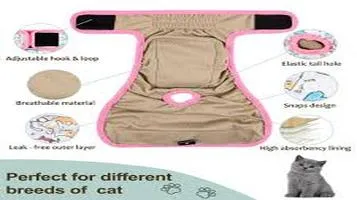Modern Furniture Design Trends: An In-Depth Review
Modern furniture design trends emphasize minimalism, functionality, and sustainability. Clean lines and simple silhouettes dominate, creating sleek and uncluttered spaces. Natural materials like wood, metal, and glass are favored, often paired with eco-friendly and recycled materials to promote environmental consciousness. Neutral color palettes are popular, with splashes of bold hues used as accents to add character and personality. Multi-functional furniture is on the rise, catering to smaller living spaces by combining style with practicality. Additionally, technology integration is becoming common, with smart furniture offering innovative solutions for modern living. Overall, the trend leans towards creating harmonious environments that balance aesthetics and usability, reflecting a shift towards mindful and purposeful living.

In an era where the boundaries between technology, sustainability, and aesthetics are continually merging, modern furniture design has become a fascinating arena for innovation and creativity. Over recent years, the trends in this sector have evolved significantly, reflecting broader societal shifts and the changing needs and preferences of consumers. This review delves into the prevailing trends in modern furniture design, examining their origins, characteristics, and potential impact on the future of interior spaces.
1. Minimalism with a Twist
Minimalism has long been a cornerstone of modern furniture design. However, today's minimalism is less about stark, cold spaces and more about warmth and subtlety. Designers are embracing the "less is more" philosophy but infusing it with personality and comfort. This contemporary take often incorporates natural materials such as wood and stone, combined with neutral color palettes that evoke a sense of calm and simplicity. The clean lines and uncluttered spaces remain, but there's a newfound emphasis on creating environments that feel both functional and inviting.
2. Sustainable and Eco-Friendly Materials
As environmental consciousness grows, sustainable design practices have moved from niche to mainstream. Modern furniture designers are increasingly prioritizing eco-friendly materials and ethical manufacturing processes. Recycled wood, bamboo, and reclaimed metals are becoming staples, while innovative materials like mushroom leather and bioplastics are also making waves. This trend is not just about the materials themselves but also about the longevity and life cycle of the products. The focus is on creating pieces that are durable, timeless, and capable of being repaired or repurposed, thus reducing waste and promoting sustainability.
3. Technological Integration
The integration of technology into furniture design is another significant trend. As smart homes become more prevalent, furniture that can seamlessly incorporate technology is highly sought after. This includes everything from built-in wireless charging stations and smart lighting to furniture with integrated speakers and voice-activated controls. These technological advancements aim to enhance convenience and connectivity, making everyday living more efficient and enjoyable. However, the challenge for designers is to ensure that these tech features blend harmoniously with aesthetic elements, rather than detracting from the overall design.
4. Multifunctional and Flexible Designs
With urban living spaces becoming increasingly compact, there is a growing demand for furniture that is multifunctional and adaptable. Modern furniture design is responding to this need with clever, space-saving solutions. Examples include modular sofas that can be rearranged to fit different spaces, extendable dining tables, and beds with built-in storage. These designs not only maximize space but also offer flexibility, allowing users to customize their furniture to suit their changing needs and preferences. This trend highlights the importance of versatility and practicality in contemporary living.
5. Bold Colors and Patterns
While minimalism tends to favor neutral tones, there is also a counter-trend towards bold colors and patterns. This resurgence of vibrant hues and eclectic designs is a nod to mid-century modern aesthetics, characterized by playful combinations and a sense of fun. Designers are experimenting with rich, saturated colors like deep blues, emerald greens, and mustard yellows, often juxtaposed with striking patterns and textures. This trend allows for greater personalization and expression, catering to those who wish to make a bold statement with their interiors.
6. Curved and Organic Shapes
In contrast to the rigid, geometric forms of traditional modernism, contemporary furniture design is increasingly embracing curved and organic shapes. These softer, fluid lines create a sense of movement and flow within a space, making it feel more dynamic and welcoming. This trend is influenced by a broader appreciation for nature and biomimicry, where designs mimic natural forms and structures. Curved sofas, round tables, and organically shaped chairs are just some examples of how this trend is being realized in modern interiors.
7. Customization and Personalization
In today's market, consumers are seeking more than just off-the-shelf solutions; they want furniture that reflects their individuality. Customization and personalization have thus become key trends in modern furniture design. This can range from bespoke pieces tailored to specific requirements to customizable elements within mass-produced items. Advances in digital fabrication and 3D printing are also enabling more personalized design options, allowing consumers to co-create and modify designs to suit their tastes and needs.
Conclusion
Modern furniture design is a dynamic field that continually evolves to meet the changing demands of society. The current trends reflect a blend of aesthetic innovation, technological integration, and a strong commitment to sustainability. By marrying form with function, and beauty with practicality, today's designers are creating pieces that not only enhance the living experience but also resonate with the values and aspirations of contemporary consumers. As we look to the future, it is clear that modern furniture design will continue to push boundaries, offering solutions that are as stylish as they are sustainable and as innovative as they are inviting.






